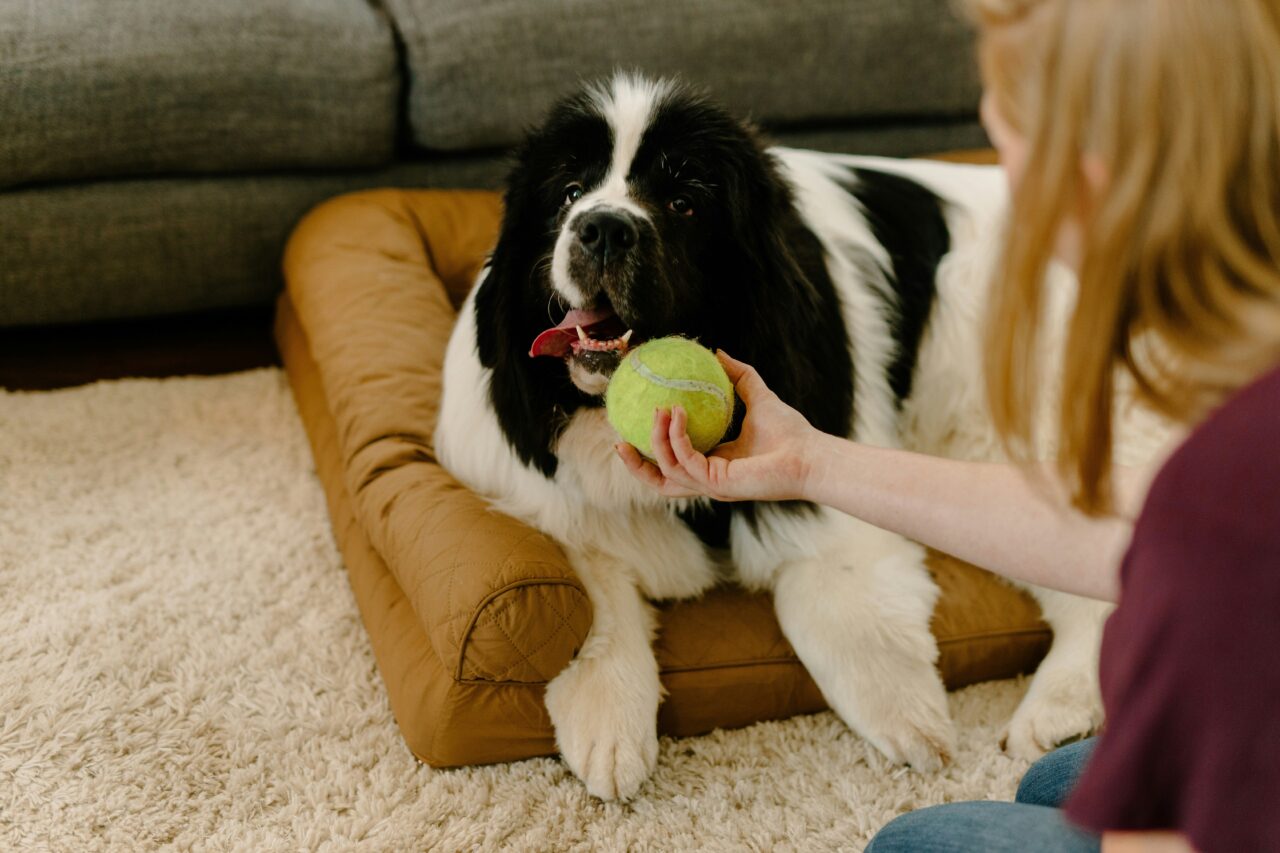📖 Table of Content:
- 1. Lack of Appetite
- 2. Excessive Sleeping
- 3. Withdrawal from Social Interaction
- 4. Destructive Behavior
- 5. Aggression or Irritability
- 6. Excessive Barking or Whining
- 7. Changes in Body Language
- 8. Obsessive Licking or Chewing
- 9. Loss of Interest in Play
- 10. Frequent Hiding
- 11. Changes in Bathroom Habits
- 12. Pacing or Restlessness
- 13. Excessive Shedding
- 14. Yawning or Lip Licking
- 15. Clinginess or Separation Anxiety
As dog owners, we want nothing more than for our furry companions to lead joyful, fulfilling lives. However, dogs can’t always communicate their feelings in ways we understand.
Recognizing the signs of an unhappy dog is crucial for addressing their needs and improving their well-being. Here are 15 indicators that your dog might be feeling unhappy and what you can do to help them feel better.
1. Lack of Appetite
Dogs are usually enthusiastic about mealtime, and their excitement for food often reflects their overall health and mood. When your dog suddenly shows no interest in eating, it’s important to take note.
This behavior can indicate emotional distress, such as anxiety or depression, or it might be linked to a medical condition. Extended periods of reduced appetite could lead to weight loss and nutritional deficiencies.
It’s essential to monitor this change closely and consult a veterinarian to rule out underlying health issues.
Additionally, consider if recent changes in their environment or routine may be contributing to their disinterest in food. Addressing the emotional triggers can help bring back their usual enthusiasm for meals.
2. Excessive Sleeping
While it’s normal for dogs to enjoy a good nap, there’s a difference between healthy rest and lethargy. An unhappy dog might sleep far more than usual, signaling disinterest in their surroundings or low energy levels.
This excessive sleep could stem from boredom, sadness, or even underlying medical problems such as hypothyroidism. Observe your dog’s behavior during their awake hours to assess whether they’re engaging with activities or showing signs of withdrawal.
Providing stimulating toys, interactive games, and regular outdoor activities can encourage them to stay alert and active.
If the excessive sleeping persists despite these efforts, seeking veterinary advice is recommended to uncover potential health concerns.
3. Withdrawal from Social Interaction
A sociable and loving dog that suddenly becomes distant can be exhibiting signs of unhappiness. Whether it’s avoiding family members, refusing to cuddle, or not greeting you at the door as usual, these behaviors indicate emotional distress.
This withdrawal may arise from feelings of fear, insecurity, or a lack of trust. Spend extra time engaging with your dog through gentle play, petting, and comforting words.
Creating a predictable and reassuring environment can help them regain their confidence. If the withdrawal continues, it may be helpful to consult an animal behaviorist to identify specific triggers and develop strategies for reconnecting with your pet.
4. Destructive Behavior
When dogs feel frustrated, bored, or anxious, they often channel these emotions into destructive actions. Chewing up furniture, digging holes, or shredding household items are common signs of emotional unrest.
These behaviors can be especially prevalent in dogs left alone for extended periods without adequate stimulation. Addressing destructive tendencies involves identifying their root cause and providing appropriate outlets for their energy.
Interactive toys, chewable items, and regular physical exercise can help redirect their focus.
Additionally, consider enriching their environment with activities like puzzle feeders or training exercises to keep their minds occupied. If the behavior persists, consulting a professional trainer can provide further insights.
5. Aggression or Irritability
Dogs that suddenly display aggression or irritability may be struggling with unhappiness, stress, or even physical discomfort.
A friendly dog that becomes snappy, growly, or defensive could be reacting to changes in their environment or feeling overwhelmed. This shift in temperament might also indicate pain or illness, so a veterinary checkup is crucial.
Once medical issues are ruled out, focus on identifying potential stressors in their surroundings. Reducing exposure to loud noises, crowded spaces, or other triggering factors can help.
Building a calm and consistent routine will also give your dog a sense of security, which is key to easing irritability and restoring their balanced temperament.
6. Excessive Barking or Whining
Dogs communicate through vocalization, and excessive barking or whining is often a clear sign that something is amiss. Unhappiness, anxiety, or frustration can cause a normally quiet dog to become unusually vocal.
It’s important to pay attention to the context in which these behaviors occur. For example, excessive barking at night might indicate loneliness, while whining near the door could suggest a desire for more outdoor activity.
Understanding these cues can help you address the underlying cause of their distress. Providing plenty of attention, physical exercise, and mental stimulation will often reduce excessive vocalizations. In some cases, consulting a trainer or behaviorist can help resolve persistent issues.
7. Changes in Body Language
Dogs communicate a lot through their body language, and subtle changes can reveal how they’re feeling. Signs like a tucked tail, flattened ears, avoiding eye contact, or a hunched posture often indicate fear, discomfort, or unhappiness.
These physical cues are their way of expressing vulnerability and seeking reassurance. If you notice these signs, approach your dog calmly and avoid forcing interaction. Offering treats, gentle words, and a safe space can help them feel more at ease.
Observing when these behaviors occur—such as during specific activities or around certain people—can provide clues about what’s causing their stress.
8. Obsessive Licking or Chewing
When dogs excessively lick or chew parts of their bodies, such as their paws or tail, it’s often a sign of anxiety or unhappiness.
This compulsive behavior can lead to further issues like skin irritation or infections if left unaddressed. It’s important to identify whether the cause is emotional or physical. Allergies, parasites, or skin conditions should be ruled out by a veterinarian.
If the behavior stems from anxiety, providing calming tools such as soothing toys, anti-anxiety wraps, or natural remedies may help. Increasing your dog’s activity level and creating a more predictable routine can also reduce stress and curb obsessive behaviors.
9. Loss of Interest in Play
Playtime is a vital part of a dog’s emotional and physical well-being, so a sudden loss of interest in toys, games, or activities they once loved is concerning. This behavior often indicates boredom, sadness, or even a lack of energy due to medical issues.
To rekindle their interest, introduce new toys or vary their activities to keep things exciting. Simple changes, like exploring a new walking route or engaging in interactive play, can make a big difference.
If your dog continues to show disinterest in play despite these efforts, consider seeking veterinary advice to rule out potential health problems.
10. Frequent Hiding
When dogs frequently retreat to hiding spots under furniture or in secluded areas, it’s a sign they’re feeling overwhelmed, scared, or unhappy.
This behavior can be triggered by loud noises, new environments, or other stressors. To help your dog feel more secure, create a calm and quiet area where they can relax without disturbances.
Spending time with them in this space can also provide reassurance. If hiding becomes a persistent habit, it’s worth evaluating any recent changes in their environment or seeking professional guidance to address underlying anxieties.
11. Changes in Bathroom Habits
Accidents in the house or sudden changes in bathroom habits can indicate emotional distress in dogs. Stress and anxiety often disrupt their normal routines, leading to behaviors like urinating indoors or avoiding their usual bathroom spots.
To address this, maintain a consistent schedule for walks and bathroom breaks. Positive reinforcement when they follow their routine can encourage good habits.
It’s also important to assess whether recent changes, such as moving to a new home or introducing a new pet, might be contributing to their stress. Consulting a veterinarian or behaviorist can help identify the root cause and provide solutions.
12. Pacing or Restlessness
Dogs that pace back and forth or seem unable to settle down are often displaying signs of unhappiness or anxiety. This restlessness can result from boredom, pent-up energy, or feeling out of place in their environment.
Structured activities, such as training sessions or long walks, can provide an outlet for their energy and reduce their restlessness. Additionally, creating a predictable daily routine can help your dog feel more secure.
If the behavior persists despite these efforts, consult a veterinarian to rule out potential medical issues that might be causing their unease.
13. Excessive Shedding
Shedding is a natural process for most dogs, but an unusual increase in shedding can be a physical manifestation of stress or unhappiness. Prolonged periods of stress can affect a dog’s coat health, leading to noticeable changes.
Regular grooming sessions can help you monitor their coat and provide an opportunity to bond with your pet. A calm and comfortable environment, combined with proper nutrition, can also promote a healthier coat.
If excessive shedding continues, consult a vet to ensure there are no underlying health problems contributing to this issue.
14. Yawning or Lip Licking
Frequent yawning or lip licking outside of situations involving fatigue or food can indicate stress or discomfort in dogs. These subtle behaviors are often overlooked but serve as important signals of their emotional state.
Observing when and where these actions occur can provide valuable insights into potential triggers. For example, yawning during training sessions might suggest your dog is overwhelmed.
Adjusting their environment or activities to make them more enjoyable and less stressful can help reduce these signs. Providing a calm and consistent atmosphere is key to making your dog feel more at ease.
15. Clinginess or Separation Anxiety
Some unhappy dogs become overly clingy, constantly following their owners from room to room and showing signs of distress when left alone. This behavior, often linked to separation anxiety, can escalate if not addressed.
Gradually training your dog to feel comfortable when you’re not around is essential. Start with short absences and reward calm behavior upon your return. Creating a safe and comforting space for them, complete with their favorite toys and blankets, can also help.
If separation anxiety persists, working with a professional trainer or behaviorist can provide strategies to manage and reduce your dog’s distress.















